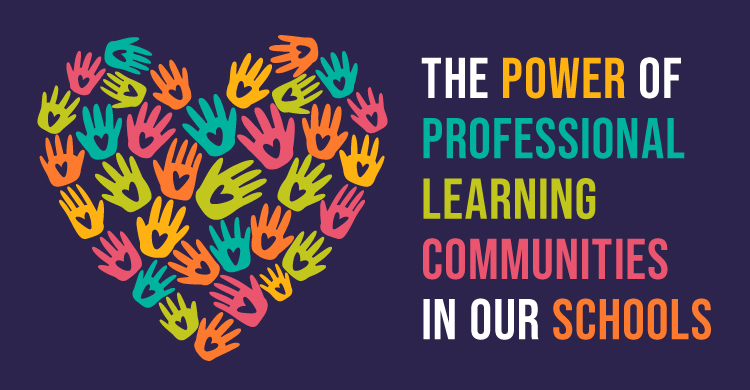In the ever-evolving landscape of education, the key to success lies not only in the dedication of individual educators but also in their collective synergy. Professional learning communities (PLC) represent the epitome of collaborative efforts within our school district, fostering an environment where educators grow, students thrive, and communities flourish. The Hot Springs School District has been on the PLC journey for many years. Approximately seven years ago, we made the shift from doing “PLC Lite” to truly implementing the PLC process right.
3 benefits of professional learning communities in schools
At the heart of a professional learning community is the recognition that teaching is not a solitary endeavor but a collaborative journey. By bringing together educators from diverse backgrounds, disciplines, and experiences, the PLC process creates a fertile ground for sharing insights, refining practices, and igniting innovation. Through regular meetings, collaborative planning sessions, lesson rehearsals, and reflective discussions, teachers engage in a continuous cycle of learning and improvement. The focus on learning, collaboration, and results guides every aspect of our work.
Powerful teaching practices pave the way for a bright future
One of the most significant impacts of being a professional learning community is the enhancement of teaching practices. By exchanging ideas, analyzing student data, and exploring best practices, educators gain invaluable insights into effective instructional strategies tailored to the unique needs of their students. This collaborative approach not only elevates the quality of teaching in individual classrooms but also fosters a culture of professional growth and excellence districtwide.
During the 2022–2023 school year, the Hot Springs School District School Board took part in a book study on Leading PLCs at Work® Districtwide: From Boardroom to Classroom. This led our school board to set priority student outcomes as part of our five-year strategic plan.
Those outcomes and goals embody literacy proficiency (90% of students reading at or above grade level by 2029), mathematics fact fluency, and college, career, and life readiness (graduation rate of at least 90% and 90% of students receiving a value-added diploma).
Our end-of-year data shows that all grade levels except for one (K–6) have met our intermediate reading goal of being at 50% by 2024. In addition, our graduation rate is currently 85.4%, and our value-added diploma percentage is 78.8%.
Differentiation is supported by strong data analysis
The PLC process serves as a catalyst for personalized student learning. By collectively analyzing student data and identifying areas for improvement, educators can tailor their instructional approaches to meet the diverse needs of every learner. Whether it’s implementing differentiated instruction, providing targeted interventions, or fostering socioemotional development, the PLC process empowers educators to address the holistic needs of their students, ensuring that no child is left behind.
Community among teachers results in a powerful ripple effect
The PLC process nurtures a sense of community and belonging among educators, fostering supportive relationships built on trust, respect, and collaboration. In an era where teacher retention and burnout are pressing concerns, professional learning communities offer a lifeline, providing a support network where educators can find encouragement, share challenges, and celebrate successes. This sense of camaraderie not only enhances job satisfaction but also fuels a shared commitment to student success.
Beyond the classroom, the positive impact of PLCs reverberates throughout our community. As educators collaborate to enhance teaching practices and student learning outcomes, the ripple effects are felt far and wide. Improved student achievement leads to higher graduation rates, increased college readiness, and, ultimately, a brighter future for our community as a whole.
The promising results of collaboration in Hot Springs, Arkansas
We have been able to accomplish amazing growth through partnerships with the Arkansas Department of Education Division of Elementary and Secondary Education, Solution Tree, Marzano Resources, and the Flippen Group (Capturing Kids’ Hearts). All six of our schools have participated in some form of the State PLC Pilot project. Two of our schools that have completed a Cohort experience are now Model PLC at Work schools. All six of our schools are Level 1 Certified (Safe, Supportive, & Collaborative Culture) High Reliability Schools, and two are Level 2 Certified (Effective Teaching in Every Classroom). Additionally, all six schools are Capturing Kids’ Hearts National Showcase Schools.
I share this to show that when you implement initiatives with fidelity, student success is achieved. We believe the partnerships that allow practitioners to support our leaders and teachers in our buildings are the best model for continued improvement.
In conclusion, the PLC process is not just a concept; it is a catalyst for transformation. By fostering collaboration, enhancing teaching practices, personalizing student learning, and nurturing a sense of community, professional learning communities are shaping the future of education in our district. As we continue to invest in the power of collective learning, we are not only empowering educators but also unlocking the full potential of every student we serve.
About the educator
Dr. Stephanie Nehus is superintendent of the Hot Springs School District in Arkansas.






